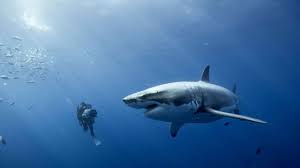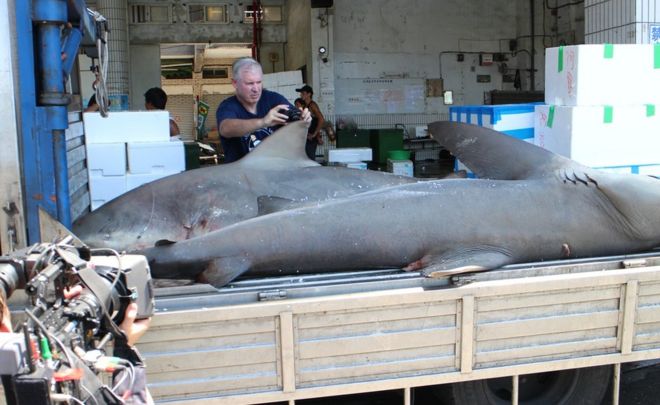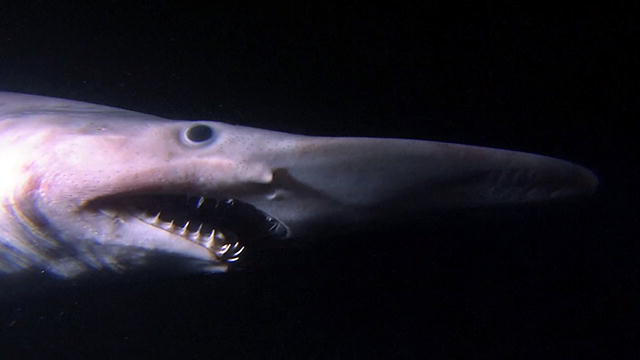All the Sharky News that is Fit to Print
Produced by: Brandon Bethea and Lisa Kubotera
Less than one week left until Discovery’s Shark Week! Can’t control your excitement? Need to find a way to pass the time? Take a look at some fascinating recent stories that our Sea Save team has collected!
1. Shark Deterrent Research Shows Interesting Results
 The Neuroecology Group at the University of Western Australia tested the effectiveness of different deterrents that has worked on other aquatic vertebrates or currently available commercial shark deterrents. They tested methods such as strobe lights, sounds, and bubble barriers. The article highlights the major findings from the research, and it will be published later this year. The scientists hope that this can be used to develop new shark deterrent technologies in the future. Read more…
The Neuroecology Group at the University of Western Australia tested the effectiveness of different deterrents that has worked on other aquatic vertebrates or currently available commercial shark deterrents. They tested methods such as strobe lights, sounds, and bubble barriers. The article highlights the major findings from the research, and it will be published later this year. The scientists hope that this can be used to develop new shark deterrent technologies in the future. Read more…
The world’s second biggest fish, the Basking Shark, was caught off the coast of Australia. This species has not been seen in 80 years and only three were reported in the last 160 years. Because the Basking Shark is so rare not much is known about them. The carcass has been taken to Museum Victoria for research purposes. Read more…
5. The Great White Shark Song by ABC4
 The Seal Beach Marine Safety Department may have found an unexpected use for their new $1,400 drone. Initially purchased to document the department’s Jr. Lifeguard Program, officials have found other uses, such as spotting sharks and strong currents. Could drones be a cost-effective way to help protect both sharks and swimmers? While drones often spark debates over privacy and other issues, this could be an interesting alternative to shark culling programs and prove invaluable to shark identification and research. Read more…
The Seal Beach Marine Safety Department may have found an unexpected use for their new $1,400 drone. Initially purchased to document the department’s Jr. Lifeguard Program, officials have found other uses, such as spotting sharks and strong currents. Could drones be a cost-effective way to help protect both sharks and swimmers? While drones often spark debates over privacy and other issues, this could be an interesting alternative to shark culling programs and prove invaluable to shark identification and research. Read more…
Be sure to “LIKE” http://facebook.com/SeaSave to ensure our “Week in Review” is delivered to your newsfeed every Thursday.
Sea Save Foundation is committed to raising awareness of marine conservation. The Week in Review is a team effort produced by the Sea Save staff to provide a weekly summary of the latest in marine research, policy, and news.







